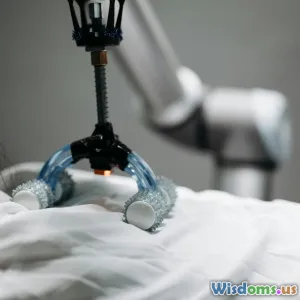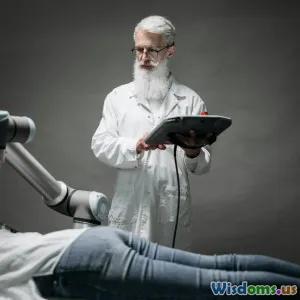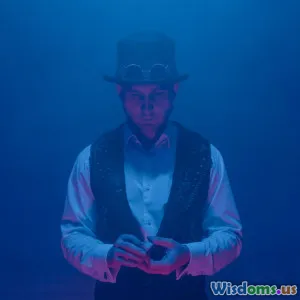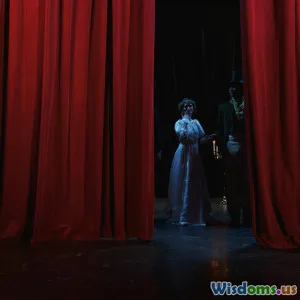
The Future of Magic: Technology and Illusion
8 min read Explore how cutting-edge technology is revolutionizing magic, transforming illusions, and shaping the future of stage magic. (0 Reviews)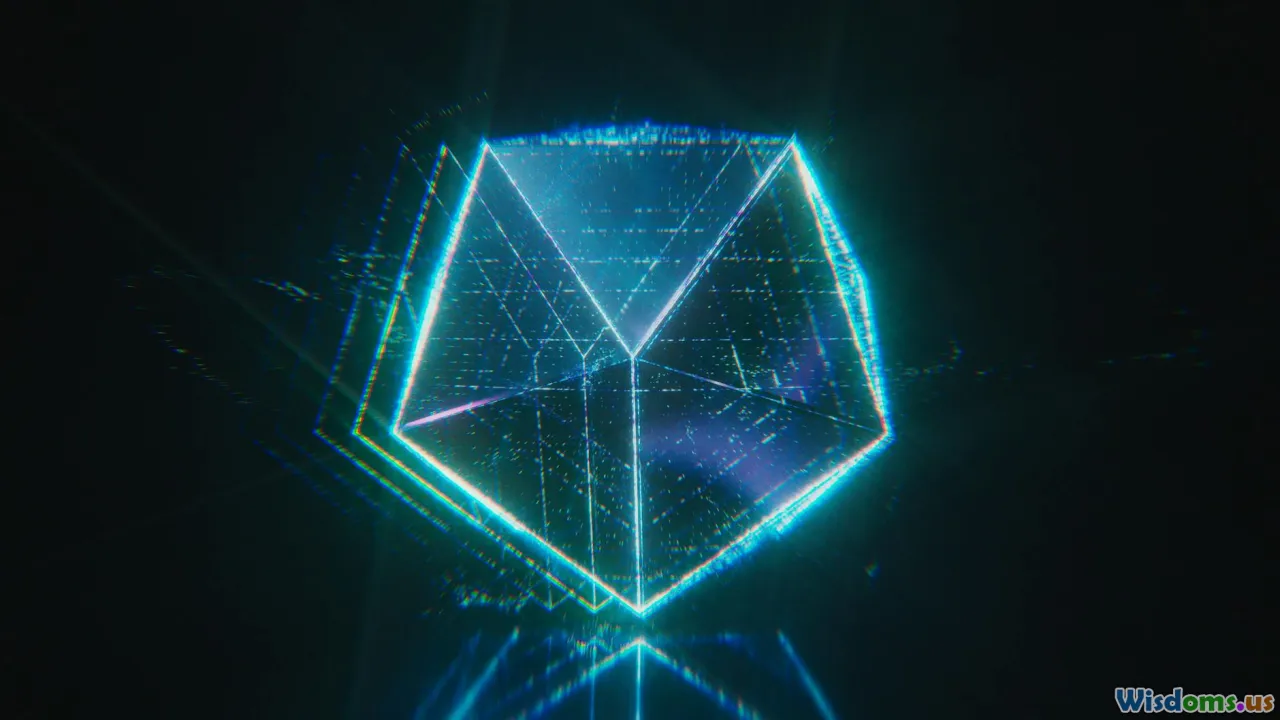
The Future of Magic: Technology and Illusion
Magic has always thrived on the element of surprise, captivating audiences by defying their expectations and stretching the boundaries of reality. From the sleight of hand and intricate props of the past to the grandeur of modern spectacles, magic evolves in tandem with cultural trends and technological advances. Today, we stand on the cusp of a thrilling transformation where technology and classic illusion forge a new realm — a future where magic is more immersive, mysterious, and mesmerizing than ever before.
In this article, we will delve into how emerging technologies are blending with age-old conjuring techniques, redefining the very fabric of stage magic and illusion.
The Technological Renaissance in Magic
Magic is fundamentally about perception. It plays with what we see, hear, and believe. Technological tools amplify this power by enhancing illusions beyond human capabilities.
Augmented Reality and Virtual Environments
Augmented Reality (AR) and Virtual Reality (VR) unleash unprecedented possibilities for magicians. By overlaying computer-generated images onto the physical world or immersing audiences entirely in a virtual stage, artists create illusions that defy traditional constraints.
For example, magician Marco Tempest has famously integrated AR into his performances, projecting digital magic that interacts with the audience in real-time. This fusion allows fantastical elements—like floating objects or shapeshifting realms—that cannot be physically constructed on stage.
- Case Study: At the 2019 TED conference, Tempest performed a digital card trick where virtual cards appeared to manipulate themselves midair. Viewers experienced a blend of real and unreal that redefined their expectations.
Artificial Intelligence: The Mind Behind the Magic
AI is not just a backstage tool but increasingly a performer’s partner. Algorithms can learn audience reactions and adapt the act dynamically, personalizing illusions for maximum impact.
Furthermore, AI-generated scripts and choreography optimize pacing and suspense. Google’s DeepMind and OpenAI have facilitated advancements where machines analyze massive datasets of magic performances to innovate new techniques.
For instance, an AI-based system called "Magician’s Assistant" can suggest surprising transitions between tricks based on emotional metrics collected during shows.
Holography and Light-Based Illusions
Holograms add a layer of ethereal mystery, allowing performers to conjure fully three-dimensional images that seem tangible but vanish effortlessly.
The iconic illusion of the "Pepper’s Ghost" effect, used since Victorian-era theaters, has been revolutionized through modern holographic displays. Jay Owenhouse’s live shows, for example, utilize cutting-edge holograms to create ghostly apparitions that move freely across the stage.
Robotics and Mechatronics
Animatronics and autonomous robotic assistants add mechanical precision to illusions beyond human dexterity. This technology enables complex, smooth, and repeatable motions necessary for large-scale illusions.
David Copperfield employed robotic stage elements subtly controlling props that appear to float or disassemble themselves. Robots enhance timing accuracy, which is crucial in sophisticated performances.
Combining Classic Techniques with Modern Innovations
A vital insight into the future of magic is recognizing that technology doesn’t replace traditional craftsmanship; rather, it acts as a remarkable amplifier.
Reinventing Sleight of Hand
While virtual elements dazzle on large stages, intimate close-up magic still thrives on manual dexterity. However, miniature sensors and wearable technology now help magicians monitor and perfect intricate manipulations.
Smart gloves embedded with motion sensors provide haptic feedback for precise finger positioning, enhancing the subtlety that defines great sleight of hand.
Storytelling and Experience Enhancement
Audience immersion is the new frontier. Combining narrative techniques with multisensory technology—the likes of spatial audio, scent emitters, and environmental control—deepens emotional connection.
For instance, magician and storyteller Eren Başbuğ integrates ambient soundscapes synchronized with illusions, creating a more convincing narrative experience.
Interactive Performances
Technology fosters active audience participation. Using smartphone apps during shows, spectators can influence trick outcomes, vote digitally, or engage with interactive elements, blurring the line between observer and co-creator.
Challenges and Ethical Dimensions
The future is enticing but not without hurdles. The use of technology presents ethical questions about deception limits and the preservation of magic’s mystique.
Magicians face decisions on transparency—should they reveal tech-based methods lest the marvel transforms into mere gimmickry?
Classicists worry that technology may overshadow skill and creativity, reducing the artistry to flashy effects without emotional depth.
Moreover, reliance on digital infrastructure introduces risks such as technical failures or cybersecurity threats in live performances.
Inspiring a New Generation of Innovators
The hybridization of magic and technology is already inspiring bright minds to push boundaries. Institutions like the Magic Castle in Los Angeles host tech-minded performers and workshops that foster experimentation.
Authors such as Jim Steinmeyer, a renowned magic designer, argue in his book Hiding the Elephant that great illusions will always depend on storytelling and psychological insight, with technology serving as a valuable tool.
Emerging platforms like YouTube and Twitch democratize magic, enabling magicians to reach and educate global communities, merging tech-savvy presentation with wondrous creativity.
Conclusion
The future of magic is a thrilling interplay between age-old craft and innovative technology. From augmented reality spectacles that dissolve the boundaries of space to AI-enhanced personalization, magic’s transformation embraces the power of new media while honoring the timeless human desire for wonder and amazement.
Audiences are invited to reimagine what is possible, as illusions become immersive experiences tailored to inspire awe like never before. For practitioners, the challenge and opportunity lie in harnessing technology thoughtfully to deepen the art rather than distract from its soul.
As magician Penn Jillette aptly said, “Magic is about the impossible made possible. Technology simply gives us new tools to dream bigger.”
The future is bright, as the convergence of technology and illusion invites everyone to witness magic not only as a show but as an unfolding miracle.
References:
- Steinmeyer, Jim. Hiding the Elephant: How Magicians Invented the Impossible and Learned to Disappear.
- TED Talk, Marco Tempest (2019).
- Jay Owenhouse Official Website.
- Case studies on AI in performing arts, DeepMind Research (2021).
- Insights into Wearable Tech in Magic, Magic Magazine, 2022.
Rate the Post
User Reviews
Popular Posts













